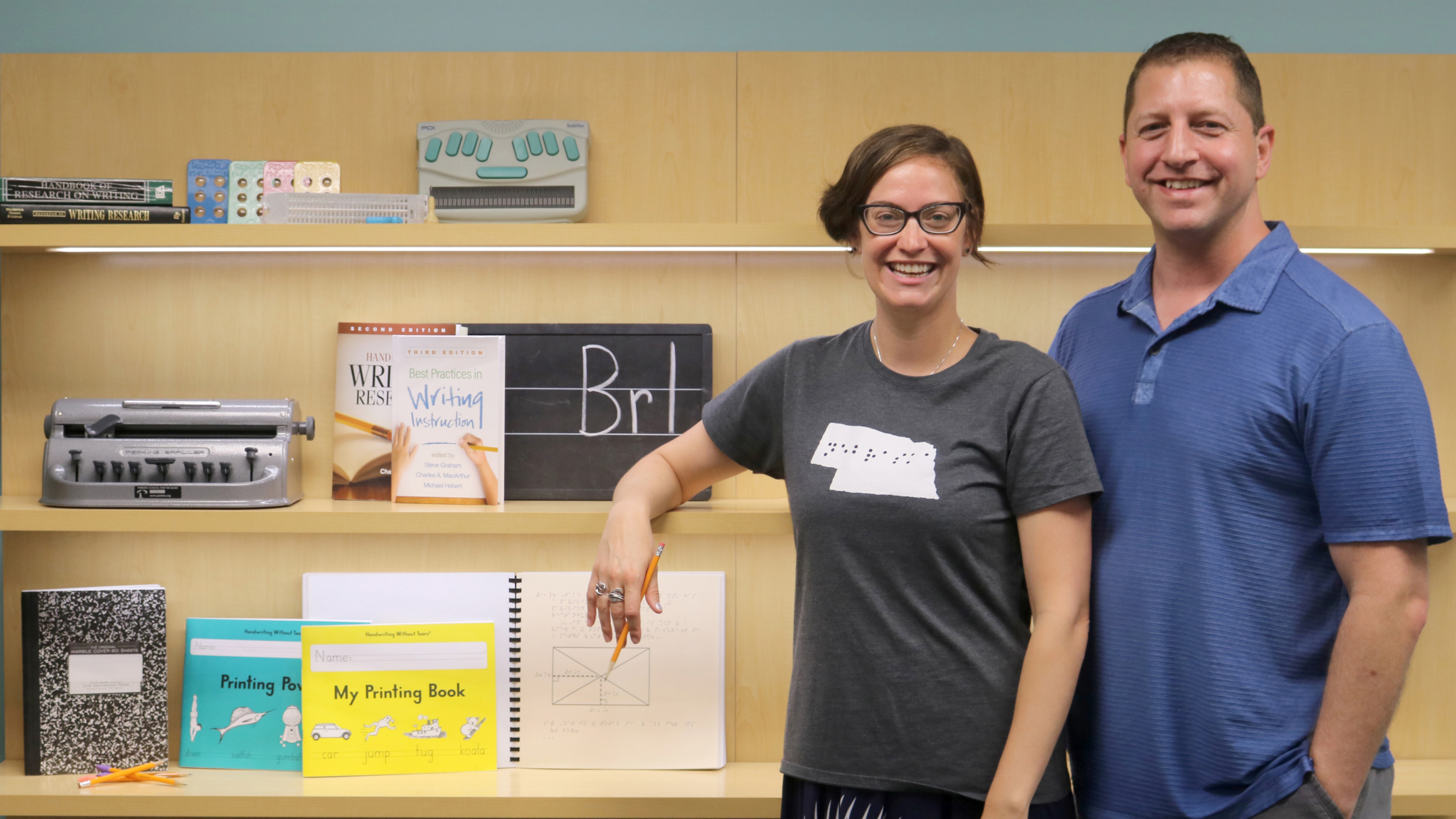
$1.4 million IES grant project aims to understand writing instruction for students with visual impairments
22 Jul 2019 By Kelcey Buck
A team of researchers at the University of Nebraska-Lincoln is launching a new research project funded by a $1.4 million grant from the Institute of Education Sciences (IES) with the goal of understanding how students with visual impairments in Nebraska are being taught to write.
Project VIEW (Visual Impairments Education in Writing) is a four-year study focused on examining and describing the writing practices used to teach writing to students with visual impairments by general education teachers and teachers of students with visual impairments (TVIs).
The research is led by associate professor Michael Hebert and assistant professor of practice Mackenzie Savaiano from the Department of Special Education and Communication Disorders. They partnered with the Nebraska Center for Research on Children, Youth, Families and Schools (CYFS) for assistance with methodology and data analysis by research assistant professor Natalie Koziol, and James Bovaird, director of the Nebraska Academy for Methodology, Analytics and Psychometrics. CYFS will also assist with database and website development.
Prior to developing the idea for Project VIEW, Hebert and Savaiano frequently discussed the way students with visual impairments are taught to write. Through those discussions, they realized there may be a disconnect between the students’ general teachers and their TVIs when it came to writing instruction.
“Our main questions were who is teaching writing skills to these students and what accommodations are being made?” Hebert said.
Through Project VIEW, they will study the quantity and quality of writing instruction, as well as adaptations and accommodations made to writing instruction for students with visual impairments. Hebert and Savaiano will also examine factors such as teachers’ preparation to teach writing, preparation to teach students with visual impairments, beliefs and expectations, and the collaboration between the general education teachers and the TVIs.
“Itinerant teachers don’t always get to spend as much time in school buildings as they would like, but that doesn’t have to impact collaboration with the classroom teacher,” said Savaiano, who coordinates Nebraska's graduate program in visual impairments. “We have seen the difference a good collaborative relationship can make. There are so many ways to communicate now that teachers in different buildings or districts can usually stay connected and focused on a student’s needs. We hope to learn more about what these teachers are doing, and what is working best when it comes to the students’ outcomes.”
Hebert and Savaiano hope to include 50 TVIs in the project, which is nearly 80 percent of the TVIs in the state of Nebraska. For each TVI, they will also include five general education teachers and five students with visual impairments. The five students will have various characteristics, including students who write using paper and pencil or braille, and students with multiple disabilities who may write in alternative ways.
During each of the four years, the Husker researchers will collect surveys, interviews and observations of the teachers, as well as student assessments that include writing samples to analyze writing abilities. The student assessments will also help them determine whether teacher practices predict writing outcomes.
A different cohort of individuals will participate in each of the four years of Project VIEW. The goal for year one is around eight TVIs, which also means 40 general education teachers and 40 students with visual impairments.
Initially, Hebert and Savaiano are developing and validating the surveys and interviews. They will work with a group of teachers in Iowa to pilot the measures, and refine the question and answer options.
Ultimately, they hope the results from Project VIEW will help strengthen the collaborations between general education teachers and TVIs so all students with visual impairments in Nebraska will benefit with improved writing instruction.
“Eventually, we’re hoping that we identify the types of evidence-based practices and collaboration strategies that teachers are using,” Hebert said. “Then we want to build on what they’re already doing and potentially develop interventions that we can employ.”
Project VIEW is supported through grant award number R324A190183 from the Institute of Education Sciences. The content is solely the responsibility of the authors and does not necessarily represent the official views of the Institute of Education Sciences.
Special Education and Communication Disorders